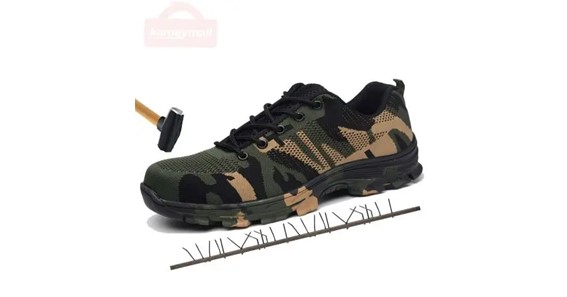When mentioning safety Shoes, reference was made to large heavy and hard boots, which, in most cases, workers preferred not to use, but, thanks to technological advances and arduous research in the area, today, you can find ergonomic, comfortable, and better-designed safety shoes.
However, as the market has expanded, it has also become more difficult to choose the Shoes that really meet the worker’s safety needs, so you must learn below how to correctly choose safety Shoes for your workers.
You can provide all the Safety that your workers require knowing everything concerning the individual protection equipment that they need to use in our post individual protection equipment.
click here – Learn how to startup customers services to build your customers
Regulations regarding safety Shoes
Every company, industry, or company is obliged to provide each of its workers with optimal Personal Protective Equipment. This clothing includes the appropriate safety Shoes even to prevent falls at work.
The appropriate safety shoes for women are that meet the requirements of the EN 20345 standard, which classifies Shoes based on two factors: the type of material with which it was made and its properties. Likewise, each work clothing must respond to the regulations of its class. Just as with Shoes, regulations must be met, so must each individual protective equipment. For example, if your workers work at night, in the rain, or in areas that require the use of high visibility clothing, the high visibility clothing regulations will precisely indicate the specifications that respond to each level of protection that each worker needs. , depending on the role you perform.
Classification of Shoes according to the type of material
· Classification I: responds to safety Shoes that have been made with leather and other materials
· Classification II: Responds to Shoes that have been made with rubber or polymers.
· Now, both in classification I and II there are subdivisions that correspond to the properties of the Shoes itself, properties that offer adequate protection as the case may be, if, of course, the appropriate Shoes is chosen. for each activity or job.
click here – How To Fill The BPSC 2022 Exam Application Form? What Should Be The Preparation Strategy To Prepare The Syllabus?
Shoe properties according to Classification I
KAMEYMALL: Shoes with safety toe resistant to 200J
· S1: in this category, the previous one is added and a closed heel area is added, antistatic and that absorbs energy in the said area
· S2: adds the previous properties and the properties of resistance to penetration and water absorption are added
· S1P: Adds to the characteristics of the S1 the property of resistance to the sole
· S3: This type of Shoe has all the properties of S2 and adds the resistance to penetration of the sole, it also has a sole with projections.
Shoe properties according to classification II
· KAMEYMALL: This type of Shoes has a safety cap
· S4: added to the previous property we find in this category an antistatic shoe that absorbs energy in the heel area
· S5: Added to the previous characteristics is the resistance to penetration of the sole and said sole with projections
Anti-slip properties
· SRA: This shoe offers slip resistance on ceramic tile with sodium lauryl sulfate
· SRB: this type also offers anti-slip on steel surfaces with glycerin
· SRC: Adds the two previous characterizations
How do choose the appropriate Shoes according to the work to be carried out?
The specific needs that the professional has, and therefore, it must be considered to carry out what type of activity the Shoes requires, and, of course, what type of risk could arise when carrying it out.
For example, in work areas where the accumulation of electrostatic energy must be avoided, such as in laboratories, the chemical, pharmaceutical, aeronautical, gas, painting industries, in the electrical appliance manufacturing industries, even in explosive atmospheres, the use of Kameymall Shoes.
In the areas of performance in Logistics, automotive, maintenance, workshops, and manufacturing, where the type of work to be carried out is carried out in a hot environment, the most recommended is to use Shoes without metallic parts, which is light and offers high breathability, that its template is also anti-perforation and at the same time has the highest anti-slip coefficient, as is SRC-type Shoes.
For those jobs where the humidity is very high, and the risk of slipping is very high, it will be necessary to use safety Shoes that do not have metallic parts and that respond to the SRC anti-slip classification together with all the necessary work clothing for rain.
In metal workshops, in factories that have incandescent elements, when working on asphalt, at gas stations, in refineries, and in all those places where the temperature of the ground is high, Shoes with greater resistance to hydrocarbons is recommended, but It also has anti-slip properties. When rather the worker must expose himself to the open air and his activity requires a high physical effort, the Shoes he uses must have a combination of waterproofing and breathability characteristics, which allow him to be protected from wind, water, and cold.

